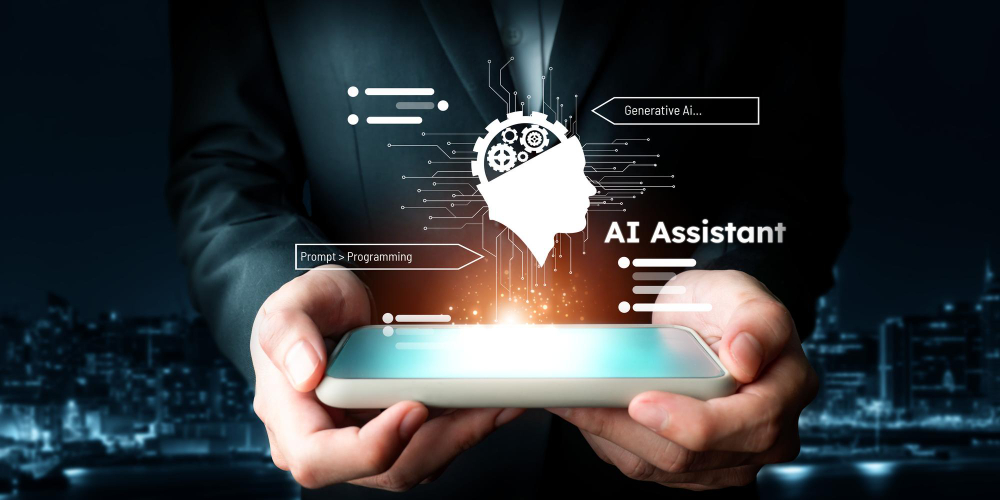AI-Driven Recruitment and Workforce Analytics
AI-Augmented AI: The Next Frontier in Recruitment and Workforce Analytics
“The future of HR isn’t just AI-driven — it’s AI that evolves, self-improves, and collaborates with humans to build smarter, fairer workplaces.”
🌐 Introduction: The Evolution of Intelligent Hiring
Artificial Intelligence (AI) has been transforming recruitment and workforce analytics for years — from resume parsing to predictive attrition models. But as 2025 unfolds, we are witnessing a powerful new phase: AI-Augmented AI.
This paradigm shift means using AI not just to automate, but to augment other AI systems, making them smarter, more adaptive, and more aligned with real-world outcomes.
In this new model:
- AI helps train and optimize other AI systems.
- Recruitment models auto-correct based on feedback loops.
- Workforce analytics evolve in real time based on changing human behavior and business needs.
Let’s dive into how AI-Augmented AI is reshaping talent acquisition, workforce planning, and the entire employee lifecycle.
🤖 What Is “AI-Augmented AI”?
AI-Augmented AI refers to systems where one AI model supports, improves, or supervises another AI model. In recruitment and HR analytics, this means creating a self-improving ecosystem where:
Machine learning models adapt automatically based on recruiter feedback.
Large Language Models (LLMs) refine candidate scoring criteria.
Autonomous AI agents optimize hiring processes over time.
Unlike traditional AI-driven solutions — which are often static or manually tuned — AI-augmented systems are dynamic, learning continuously and adjusting themselves with minimal human intervention.
📌 Example: A resume screening AI flags a candidate as a poor match. A second AI, monitoring candidate success rates, notices that similar candidates tend to perform well post-hire. It flags this inconsistency, tunes the scoring algorithm, and updates the decision logic — all automatically.
🔍 AI-Augmented Recruitment: Use Cases and Innovations
1. Dynamic Candidate Matching
Traditional AI models assess resumes based on fixed rules or historical data. AI-augmented models go further:
- Analyze contextual relevance (e.g., recent project experience vs. job description keywords).
- Learn from hiring manager feedback and performance data.
- Automatically adjust scoring algorithms based on placement success.
2. Smart Job Description Generation
- Generative AI writes inclusive, optimized job postings.
- A second model compares performance across markets, adjusts tone/language, and refines SEO.
Result: Higher quality applicants and reduced drop-off rates.
3. Adaptive AI Chatbots and Interviews
- Virtual interviewers powered by LLMs conduct and adapt conversations.
- Secondary AI evaluates sentiment, engagement, and response quality.
Together, they deliver more personalized candidate journeys and richer data for recruiters.
📊 Workforce Analytics 2.0: Continuous Learning in Action
Workforce analytics is now entering a continuous learning era, thanks to AI augmentation.
1. Predictive Models That Self-Tune
- Retention risk models adjust thresholds in real time based on actual turnover.
- AI systems recognize shifts in workforce sentiment and update analytics priorities.
2. Sentiment Analysis with Generative AI
- NLP tools analyze employee survey data, Slack messages, or feedback.
- LLMs generate summaries, trends, and recommendations.
- HR leaders receive actionable insights, not just dashboards.
3. Talent Mobility Optimization
- AI recommends lateral or upward mobility paths based on skills, performance, and aspirations.
- Augmented systems track outcomes and re-calibrate success metrics over time.
🛡️ Governance, Bias, and Explainability
As AI layers deepen, governance becomes critical. AI systems must be:
- Transparent: Recruiters and candidates need to understand why decisions are made.
- Fair: Biases must be actively monitored and mitigated.
- Accountable: Final decisions should involve human oversight, especially in high-stakes areas like hiring and promotion.
Emerging Governance Tools:
- AI fairness monitors that audit decisions in real time.
- Explainability layers that translate black-box decisions into human-readable logic.
- Policy-driven AI agents that adapt based on regulatory changes like NYC’s Local Law 144 or the EU AI Act.
⚖️ AI-Augmented AI must not just be intelligent — it must also be responsible.
🚀 Looking Ahead: Autonomous HR and Living Talent Ecosystems
AI-Augmented AI is not the end goal — it’s a stepping stone toward autonomous HR systems that:
Collaborate with humans.
Learn from new data streams (e.g., productivity tools, wellness apps).
Adapt hiring, onboarding, development, and retention strategies in real time.
Soon, we’ll see:
AI HR copilots embedded into platforms like SAP SuccessFactors, Oracle HCM, or Workday.
Digital twins of your workforce predicting future scenarios.
AI-led organizational design based on productivity, well-being, and collaboration metrics.
🧠 Final Thoughts: Human-Centered Intelligence
AI-Augmented AI in recruitment and workforce analytics is not about replacing humans — it’s about amplifying human decision-making.
The real promise lies in:
Faster, fairer hiring processes.
More responsive and inclusive workforce strategies.
A smarter, evolving partnership between technology and HR professionals.
As organizations move beyond automation toward adaptive intelligence, those who embrace this shift — thoughtfully and ethically — will build the most resilient, engaged, and future-ready workforces.
✅ TL;DR
AI-Augmented AI uses one AI model to improve another — enabling smarter, self-improving HR systems.
It powers dynamic candidate matching, adaptive job descriptions, and real-time workforce analytics.
Ethics and governance are essential as these systems grow more autonomous.
This isn’t just the future of recruiting — it’s the blueprint for the next generation of work itself.
📌 Want More?
Need help building an AI-augmented hiring strategy? Interested in tools or vendors leading this space? Let me know — I can provide customized recommendations, tech stack comparisons, or a presentation version of this blog.





